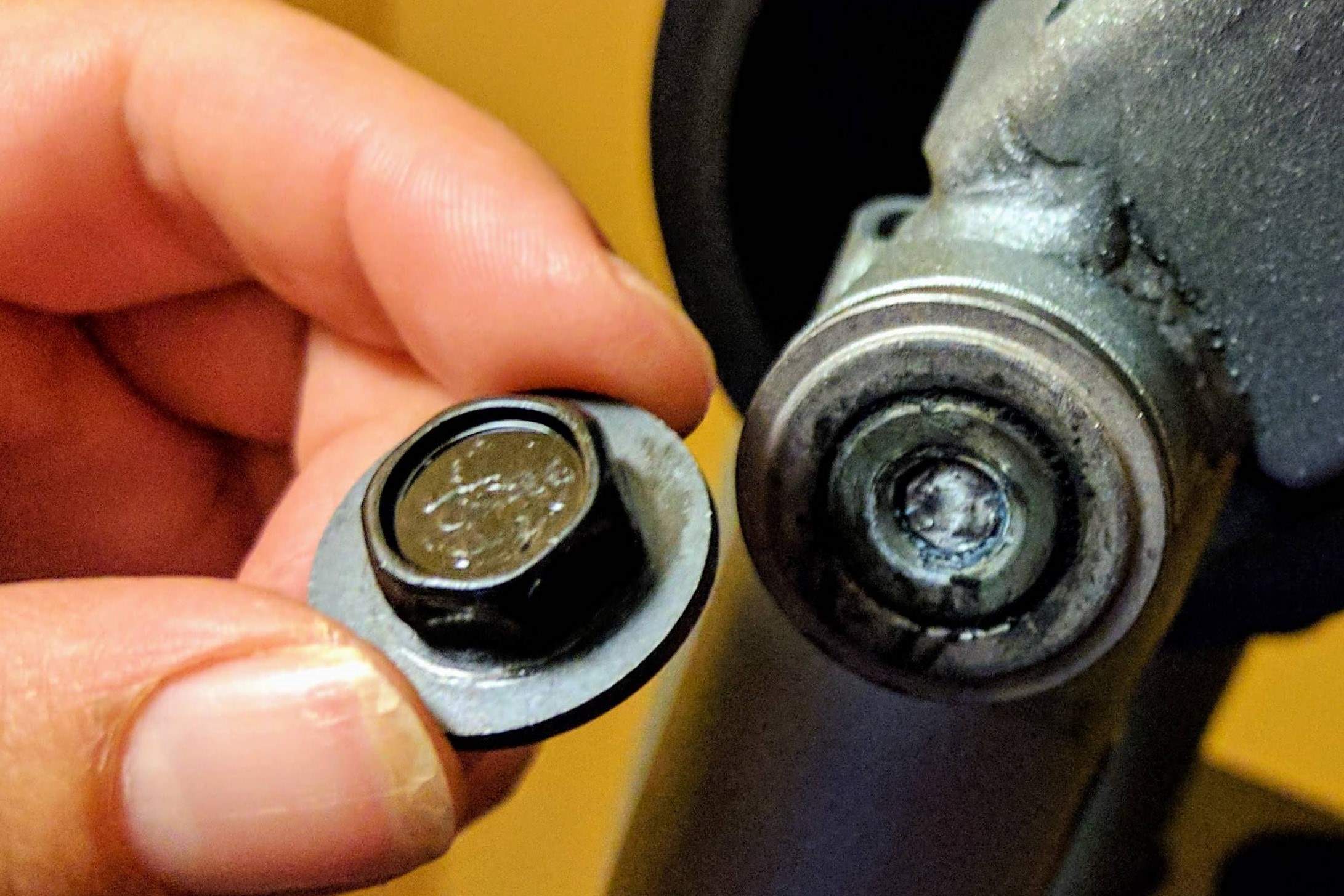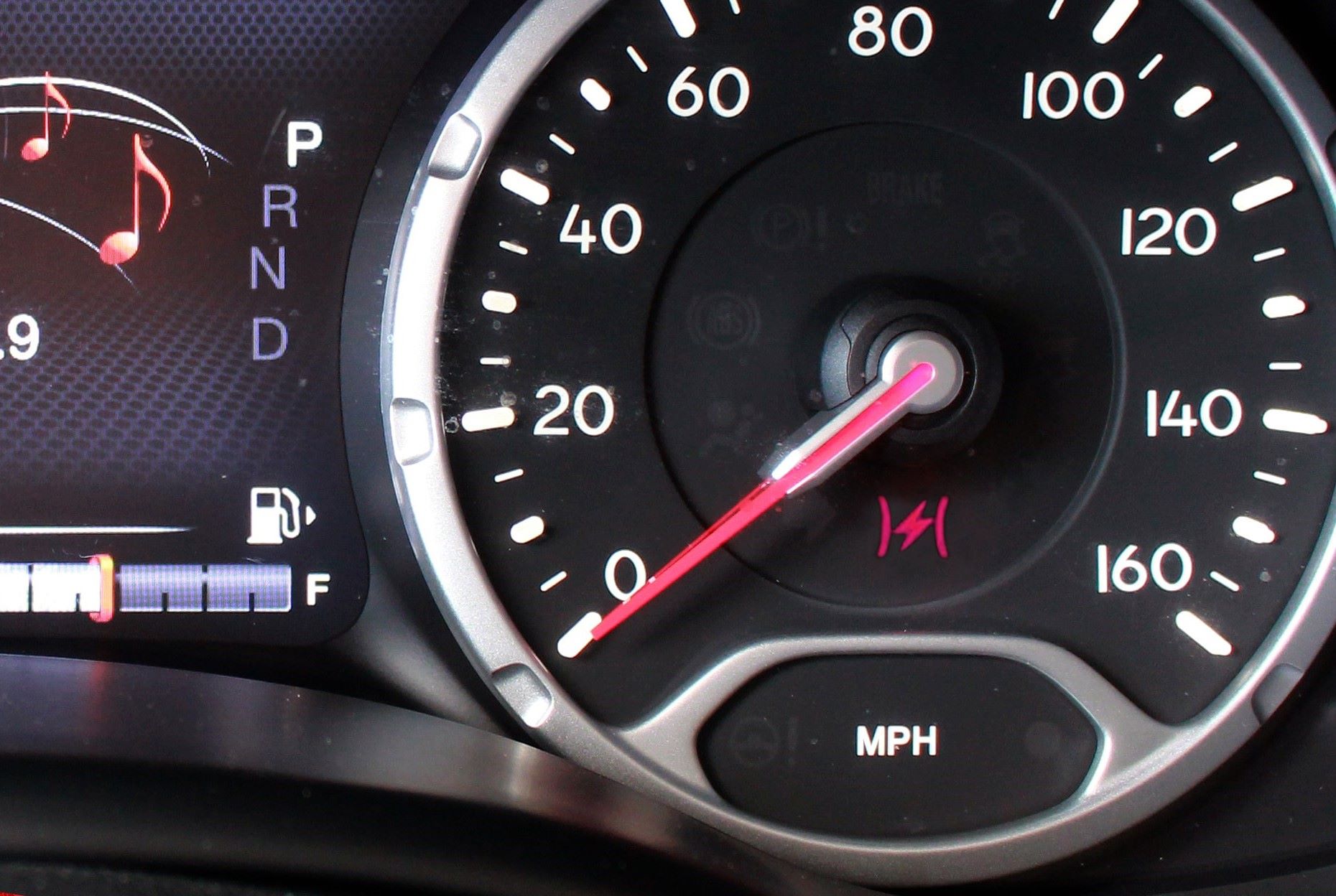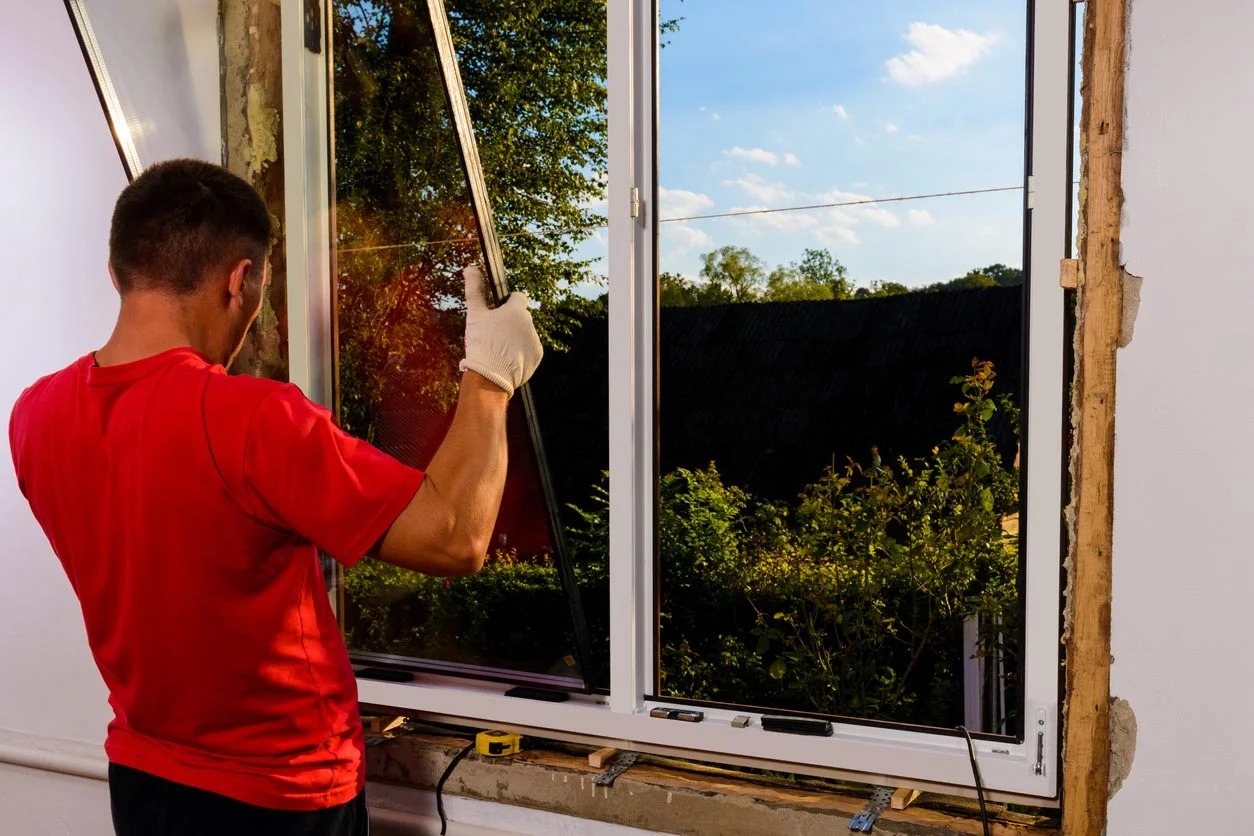Home>Home and Garden>How To Remove A Broken Bolt


Home and Garden
How To Remove A Broken Bolt
Published: March 3, 2024
Learn how to remove a broken bolt with our expert tips and techniques. Get step-by-step instructions for easy bolt extraction at home. Perfect for home and garden projects.
(Many of the links in this article redirect to a specific reviewed product. Your purchase of these products through affiliate links helps to generate commission for Noodls.com, at no extra cost. Learn more)
Table of Contents
Introduction
Dealing with a broken bolt can be a frustrating and challenging task, especially if you're not equipped with the right knowledge and tools. Whether you're a seasoned DIY enthusiast or a novice in the realm of home repairs, encountering a broken bolt can quickly derail your project and leave you feeling overwhelmed. However, with the right approach and a bit of patience, you can effectively tackle this common issue and get back on track with your home and garden endeavors.
A broken bolt can occur in various scenarios, from attempting to assemble furniture to working on automotive repairs or tackling home improvement projects. Regardless of the context, the presence of a broken bolt can bring your progress to a screeching halt. However, it's essential to approach the situation with a calm and methodical mindset. By following a systematic process and utilizing the appropriate techniques, you can successfully remove the broken bolt and resume your task with minimal disruption.
In this comprehensive guide, we will walk you through the step-by-step process of removing a broken bolt, covering everything from assessing the situation to utilizing specialized tools and techniques. Whether you're dealing with a small broken bolt in a piece of furniture or a larger bolt in a mechanical component, the principles and methods outlined in this guide can be adapted to suit your specific needs.
By the end of this article, you will have a clear understanding of the necessary steps to take when faced with a broken bolt, empowering you to tackle this common issue with confidence and precision. So, roll up your sleeves, gather your tools, and let's dive into the process of removing a broken bolt, ensuring that you're well-equipped to handle this challenge effectively.
Read more: How To Remove A Broken Screw
Step 1: Assess the Situation
Before diving into the process of removing a broken bolt, it's crucial to thoroughly assess the situation to gain a clear understanding of the extent of the damage and the best approach for removal. Here's a detailed breakdown of the key aspects to consider during this initial assessment:
1.1 Identify the Type of Material
Begin by identifying the type of material the broken bolt is lodged in. Whether it's wood, metal, or plastic, the material will influence the techniques and tools you can use for extraction. For instance, working with a broken bolt in metal may require more robust tools and lubricants compared to a bolt in wood.
1.2 Evaluate the Accessibility
Assess the accessibility of the broken bolt. Is it located in a confined space or a more open area? The accessibility will determine the type of tools and methods that can be effectively utilized for removal. Additionally, consider the surrounding components and any potential obstructions that may impede the extraction process.
1.3 Determine the Severity of Damage
Carefully inspect the broken bolt to gauge the severity of the damage. Is the bolt partially broken or completely sheared off? Understanding the extent of the damage will help in selecting the most suitable approach for extraction, whether it involves using a screw extractor, drilling, or employing specialized bolt removal tools.
Read more: Genius Hacks To Remove A Rounded Bolt Head!
1.4 Consider the Bolt Size and Thread Type
Take note of the size and thread type of the broken bolt. This information is crucial for selecting the appropriate extractor or drill size, ensuring a precise and effective removal process. Additionally, understanding the thread type will aid in determining the direction for turning the bolt during extraction.
1.5 Assess the Surrounding Components
Evaluate the surrounding components and any potential impact on the removal process. Are there delicate or sensitive parts nearby that need to be protected during the extraction? Considering the broader context will help in devising a strategy that minimizes the risk of collateral damage while removing the broken bolt.
By meticulously assessing these key factors, you'll be well-equipped to proceed with the subsequent steps of removing the broken bolt. This initial evaluation sets the foundation for a systematic and effective approach, ensuring that the extraction process is tailored to the specific characteristics of the broken bolt and its surrounding environment.
Step 2: Gather the Necessary Tools
When it comes to removing a broken bolt, having the right tools at your disposal is paramount to the success of the extraction process. The following comprehensive list outlines the essential tools required to effectively tackle the task of removing a broken bolt:
2.1. Safety Gear
Before delving into the extraction process, it's crucial to prioritize safety. Equip yourself with protective gear, including safety goggles to shield your eyes from potential debris and gloves to safeguard your hands during the removal process. Additionally, consider wearing a face mask to prevent inhalation of any particles that may be dislodged during the extraction.
2.2. Penetrating Lubricant
A high-quality penetrating lubricant is a fundamental component in the bolt removal process. The lubricant helps to loosen the grip of the broken bolt within the material, making it easier to extract. Opt for a penetrating oil specifically designed to break down rust and corrosion, as this will significantly aid in the extraction of stubborn bolts.
2.3. Adjustable Wrench or Locking Pliers
An adjustable wrench or locking pliers are indispensable tools for gripping and turning the broken bolt during the extraction process. Ensure that the wrench or pliers are appropriately sized to securely grasp the bolt without causing slippage, enabling you to apply controlled force during the removal.
2.4. Drill and Drill Bits
In scenarios where the broken bolt cannot be extracted using conventional methods, a drill and a set of drill bits become essential. The drill allows for precise drilling into the broken bolt, while a selection of drill bits in varying sizes enables you to gradually increase the boring diameter as needed for successful extraction.
2.5. Screw Extractor Set
A screw extractor set, also known as an easy out, is specifically designed for removing broken or stripped screws and bolts. This specialized tool features a reverse-threaded end that bites into the bolt as it is turned, facilitating its removal from the material. Ensure that the screw extractor set includes a range of sizes to accommodate different bolt dimensions.
2.6. Bolt Removal Tool
For larger or more stubborn broken bolts, a bolt removal tool, such as a bolt extractor socket set, can be invaluable. These tools are designed to grip onto the broken bolt securely, allowing for the application of substantial torque to facilitate its extraction. Select a bolt removal tool that matches the size and type of the broken bolt for optimal results.
2.7. Hammer and Punch
In situations where the broken bolt protrudes from the material, a hammer and punch can be utilized to tap the bolt and create movement. This can help dislodge any corrosion or rust that may be binding the bolt, making it easier to initiate the extraction process.
2.8. Thread Tap and Die Set
In cases where the threads within the material are damaged due to the broken bolt, a thread tap and die set can be indispensable for restoring the threaded hole. This set allows for the reformation of internal threads, ensuring that a new bolt can be securely fastened upon successful extraction.
By assembling these essential tools, you will be well-prepared to tackle the process of removing a broken bolt with confidence and precision. Each tool plays a crucial role in the extraction process, equipping you to address a wide range of scenarios and challenges that may arise during the removal of broken bolts.
Step 3: Apply Lubricant
The application of a high-quality penetrating lubricant is a critical preliminary step in the process of removing a broken bolt. When a bolt becomes seized or corroded within a material, the use of a penetrating lubricant serves to loosen the bond between the bolt and the surrounding material, significantly easing the extraction process. Here's a detailed exploration of the application of lubricant and its pivotal role in preparing the broken bolt for removal.
Read more: How To Remove Tint
3.1 Understanding the Purpose of Penetrating Lubricant
Penetrating lubricants are specifically formulated to infiltrate the microscopic gaps between the threads of the broken bolt and the surrounding material. These lubricants work by leveraging capillary action, allowing them to seep into tight spaces and effectively break down the rust, corrosion, or adhesion that may be binding the bolt. By penetrating and loosening the grip of the broken bolt, the lubricant prepares the bolt for extraction, making it easier to apply turning force and facilitate its removal.
3.2 Selecting a High-Quality Penetrating Lubricant
When choosing a penetrating lubricant for the extraction process, opt for a reputable product known for its superior penetrating and rust-dissolving properties. Look for lubricants specifically designed to tackle stubborn bolts and screws, as they are formulated to handle the challenges posed by corrosion and rust. Additionally, consider selecting a lubricant that offers a thin, straw-like applicator nozzle, enabling precise and targeted application to the broken bolt and its immediate surroundings.
3.3 Applying the Lubricant
To apply the penetrating lubricant, begin by directing the nozzle of the lubricant container toward the base of the broken bolt, ensuring that the lubricant is delivered directly onto the threads and the interface between the bolt and the material. Exercise patience as you apply the lubricant, allowing it to permeate the area thoroughly. If the broken bolt is situated within a confined space, utilize a small, angled applicator to reach the target area effectively.
3.4 Allowing Penetration and Dwell Time
After applying the lubricant, allow it sufficient time to penetrate and work its magic. The dwell time will vary depending on the severity of corrosion and the type of lubricant used. In general, it's advisable to let the lubricant sit for at least 15-30 minutes, allowing it to break down the rust and corrosion effectively. During this period, the lubricant will continue to seep into the threads, gradually weakening the bond between the broken bolt and the material.
Read more: How To Remove Blinds
3.5 Reapplication for Stubborn Bolts
For exceptionally stubborn or heavily corroded bolts, consider reapplying the penetrating lubricant multiple times, allowing for extended dwell periods between applications. This iterative approach can significantly enhance the effectiveness of the lubricant, progressively loosening the grip of the broken bolt and preparing it for subsequent extraction methods.
By meticulously applying a high-quality penetrating lubricant and allowing it to work its way into the interface between the broken bolt and the material, you set the stage for a smoother and more efficient extraction process. This crucial step lays the groundwork for the subsequent methods of removing the broken bolt, ensuring that the bolt is primed for successful extraction while minimizing the risk of damage to the surrounding material.
Step 4: Use a Screw Extractor
When conventional methods and penetrating lubricants prove insufficient in removing a broken bolt, a screw extractor, also known as an easy out, emerges as a valuable tool for tackling this challenging scenario. A screw extractor is specifically designed to grip into the broken bolt and facilitate its removal from the material. Here's a detailed exploration of the process of using a screw extractor to effectively extract a broken bolt.
4.1 Selecting the Appropriate Screw Extractor Size
Before commencing the extraction process, it's essential to select a screw extractor of the appropriate size. The extractor should be slightly smaller than the diameter of the broken bolt to ensure a secure grip without causing further damage to the surrounding material. Opt for a screw extractor set that offers a range of sizes, enabling you to match the extractor to the dimensions of the broken bolt accurately.
4.2 Preparing the Broken Bolt for Extraction
To prepare the broken bolt for the screw extractor, carefully center-punch the exact midpoint of the bolt to create a starting point for drilling. This initial indentation serves as a guide for the drill bit and helps prevent it from wandering off-center during the drilling process. Additionally, consider using a smaller drill bit to create a pilot hole in the center of the broken bolt, ensuring precise alignment for the subsequent screw extractor.
Read more: How To Remove Door Knob
4.3 Drilling into the Broken Bolt
With the pilot hole in place, select a drill bit that corresponds to the recommended size for the screw extractor. Begin drilling into the broken bolt, ensuring a straight and steady approach to prevent any deviation from the intended path. Exercise caution to avoid excessive force, as this may lead to further complications. The drilling process creates a pathway for the screw extractor to engage with the broken bolt securely.
4.4 Engaging the Screw Extractor
Once the hole is drilled, insert the screw extractor into the prepared opening, ensuring a firm and secure fit. The extractor features a reverse-threaded end that bites into the walls of the drilled hole as it is turned counterclockwise. Apply consistent and controlled pressure while turning the extractor using an adjustable wrench or locking pliers, gradually increasing the torque to dislodge the broken bolt from the material.
4.5 Extracting the Broken Bolt
As the screw extractor digs into the broken bolt, it gradually loosens and dislodges the bolt from the material. Exercise patience and avoid excessive force, as this may risk snapping the extractor or causing further damage. With persistent and methodical turning, the broken bolt should begin to rotate and eventually be extracted from the material, allowing for a successful removal.
By meticulously following the process of using a screw extractor, you can effectively tackle the challenge of removing a broken bolt, restoring functionality and progress to your home and garden projects. This methodical approach, coupled with the appropriate tools and techniques, empowers you to address broken bolts with confidence and precision, ensuring that you can overcome this common obstacle with ease.
Step 5: Drill Out the Bolt
When traditional methods and screw extractors prove ineffective in removing a stubborn broken bolt, the process of drilling out the bolt becomes a viable and strategic approach. This method involves carefully drilling into the center of the broken bolt and gradually increasing the bore diameter to weaken and dislodge the bolt from the material. Here's a comprehensive exploration of the step-by-step process of drilling out the bolt to facilitate its successful removal.
Read more: How To Remove Rusted Screws
5.1 Assessing the Feasibility of Drilling
Before initiating the drilling process, it's essential to assess the feasibility of this method based on the specific characteristics of the broken bolt and its surrounding environment. Consider factors such as the size of the broken bolt, the material it is lodged in, and the accessibility for drilling. Additionally, evaluate the potential impact of drilling on the integrity of the surrounding components to ensure that this method aligns with the overall extraction strategy.
5.2 Selecting the Appropriate Drill Bit
To commence the drilling process, select a drill bit that is slightly smaller than the diameter of the broken bolt. This ensures precise drilling and minimizes the risk of damaging the surrounding material. Opt for a high-quality cobalt or titanium drill bit designed for drilling into tough materials, as these offer enhanced durability and heat resistance, crucial for effectively boring into the broken bolt.
5.3 Center-Punching and Pilot Hole Creation
Center-punch the exact midpoint of the broken bolt to create a starting point for drilling. This initial indentation serves as a guide for the drill bit and helps prevent it from wandering off-center during the drilling process. Subsequently, use a smaller drill bit to create a pilot hole in the center of the broken bolt, ensuring accurate alignment for the subsequent drilling stages.
5.4 Gradual Boring and Increasing Drill Bit Size
With the pilot hole in place, begin drilling into the broken bolt using the selected drill bit. Apply steady and controlled pressure to ensure a straight and precise approach, gradually increasing the bore diameter. As the drilling progresses, periodically clear the debris and metal shavings to maintain a clear pathway for the drill bit, preventing potential obstructions and ensuring a smooth drilling process.
Read more: How To Remove A Ring Faceplate
5.5 Monitoring Progress and Extraction
Continuously monitor the drilling progress, ensuring that the drill bit remains aligned with the center of the broken bolt. As the bore diameter increases, the weakened structure of the bolt will facilitate its dislodgement from the material. Exercise patience and precision during this process, avoiding excessive force to minimize the risk of damaging the surrounding material.
By meticulously following the process of drilling out the bolt, you can effectively address the challenge of removing a stubborn broken bolt, ensuring that your home and garden projects can proceed without impediments. This method offers a strategic and adaptable approach to bolt extraction, providing a valuable alternative when traditional methods prove insufficient.
Step 6: Use a Bolt Removal Tool
When conventional methods such as screw extractors and drilling fail to dislodge a broken bolt, employing a bolt removal tool becomes a strategic and effective approach to tackle this persistent challenge. A bolt removal tool, also known as a bolt extractor socket set, is specifically designed to grip onto the broken bolt securely, allowing for the application of substantial torque to facilitate its extraction.
6.1 Selecting the Appropriate Bolt Removal Tool
Before initiating the extraction process using a bolt removal tool, it is crucial to select a tool that matches the size and type of the broken bolt. Bolt removal tools are available in various sizes and configurations to accommodate different bolt dimensions and thread types. It is essential to choose a tool that provides a secure and precise fit over the broken bolt, ensuring optimal engagement for effective extraction.
6.2 Preparing the Broken Bolt for Extraction
To prepare the broken bolt for the bolt removal tool, ensure that the surrounding area is clear of debris and obstructions. Clean the surface around the broken bolt to provide a clear workspace for the application of the removal tool. Additionally, consider applying a penetrating lubricant to the broken bolt and its immediate surroundings to facilitate the extraction process, particularly if the bolt is corroded or seized within the material.
Read more: How To Remove Tub Drain
6.3 Engaging the Bolt Removal Tool
Once the broken bolt and its surrounding area are prepared, select the appropriately sized bolt removal tool and position it securely over the broken bolt. Ensure that the tool is aligned with the bolt and seated firmly to prevent slippage during the extraction process. Utilize a ratchet or breaker bar compatible with the bolt removal tool to apply controlled and gradual torque, initiating the dislodgement of the broken bolt from the material.
6.4 Applying Controlled Torque for Extraction
With the bolt removal tool engaged, apply consistent and controlled torque in the counterclockwise direction to facilitate the extraction of the broken bolt. Exercise patience and precision during this process, gradually increasing the torque as needed to overcome resistance. Avoid abrupt or excessive force, as this may risk damaging the surrounding material or compromising the effectiveness of the extraction.
6.5 Monitoring Progress and Successful Extraction
Continuously monitor the progress of the extraction, ensuring that the bolt removal tool remains securely engaged with the broken bolt. As the torque is applied, the broken bolt should gradually begin to rotate and dislodge from the material. Exercise caution to prevent the bolt removal tool from slipping or losing its grip during the extraction process. Upon successful extraction, carefully remove the broken bolt and assess the threaded hole for any potential damage or debris.
By meticulously following the process of using a bolt removal tool, you can effectively address the challenge of removing a broken bolt, ensuring that your home and garden projects can proceed without impediments. This method offers a robust and versatile approach to bolt extraction, providing a valuable solution when traditional methods prove insufficient.
Step 7: Seek Professional Help if Necessary
In some instances, despite employing various DIY methods and specialized tools, the extraction of a broken bolt may present unforeseen challenges or complications. When faced with particularly stubborn or complex scenarios, it is crucial to recognize the value of seeking professional assistance to address the issue effectively.
Professional technicians and mechanics possess the expertise, experience, and access to advanced tools and equipment necessary to tackle intricate bolt extraction challenges. Their in-depth understanding of materials, fastening mechanisms, and extraction techniques equips them to navigate complex scenarios with precision and efficiency.
Professional assistance becomes especially crucial when dealing with broken bolts in critical components, intricate machinery, or structural elements where the risk of damage or misalignment is heightened. By entrusting the task to skilled professionals, you can mitigate the potential for inadvertent damage to the surrounding components and ensure that the extraction process is executed with the utmost care and precision.
Moreover, professional technicians are adept at evaluating the broader implications of bolt extraction within the context of larger systems or assemblies. Their ability to assess the impact of bolt removal on the structural integrity and functionality of the surrounding components is instrumental in devising a comprehensive and strategic extraction strategy.
Furthermore, professional assistance offers the advantage of access to specialized machinery, such as precision drilling equipment, hydraulic extraction tools, and advanced thread repair systems. These resources enable professionals to address complex bolt extraction challenges with a level of precision and sophistication that may not be feasible through conventional DIY methods.
By recognizing the value of seeking professional help when necessary, you can ensure that the extraction of a broken bolt is approached with the highest level of expertise and technical proficiency. This proactive approach not only safeguards the integrity of the components and materials involved but also contributes to the successful resolution of the extraction challenge, allowing you to proceed with your home and garden projects with confidence and peace of mind.
Read more: How To Remove Bumper Stickers
Conclusion
In conclusion, the process of removing a broken bolt demands a systematic approach, the utilization of specialized tools, and a keen understanding of the unique characteristics of the broken bolt and its surrounding environment. From the initial assessment of the situation to the application of lubricants, the selection of appropriate tools, and the strategic implementation of extraction methods, addressing broken bolts requires patience, precision, and adaptability.
By meticulously assessing the type of material, accessibility, severity of damage, bolt size, and surrounding components, individuals can lay the groundwork for a targeted and effective extraction strategy. This initial evaluation sets the stage for informed decision-making and ensures that subsequent extraction methods are tailored to the specific attributes of the broken bolt and its immediate context.
The gathering of necessary tools, including safety gear, penetrating lubricants, adjustable wrenches, drill bits, screw extractors, bolt removal tools, hammers, and thread tap and die sets, equips individuals with the means to address a diverse range of broken bolt scenarios. Each tool plays a crucial role in the extraction process, offering a comprehensive toolkit to navigate the challenges posed by broken bolts in various materials and applications.
The application of penetrating lubricants serves as a pivotal preparatory step, allowing the lubricant to infiltrate the microscopic gaps between the threads of the broken bolt and the surrounding material. This process weakens the bond between the bolt and the material, priming the bolt for subsequent extraction methods and minimizing the risk of damage to the surrounding components.
When traditional methods such as screw extractors and drilling prove insufficient, the strategic use of bolt removal tools offers a robust and adaptable approach to dislodging stubborn broken bolts. The engagement of bolt removal tools, coupled with the application of controlled torque, facilitates the successful extraction of broken bolts, ensuring that home and garden projects can proceed without impediments.
In instances where the extraction of a broken bolt presents unforeseen challenges or risks, seeking professional assistance becomes a prudent course of action. Professional technicians possess the expertise, experience, and access to advanced tools necessary to navigate complex extraction scenarios with precision and efficiency, safeguarding the integrity of critical components and materials.
By embracing a methodical and informed approach to removing broken bolts, individuals can overcome this common challenge with confidence and precision, ensuring that their home and garden projects progress seamlessly. The successful extraction of broken bolts not only restores functionality and progress but also underscores the resilience and adaptability of DIY enthusiasts in addressing mechanical obstacles.





